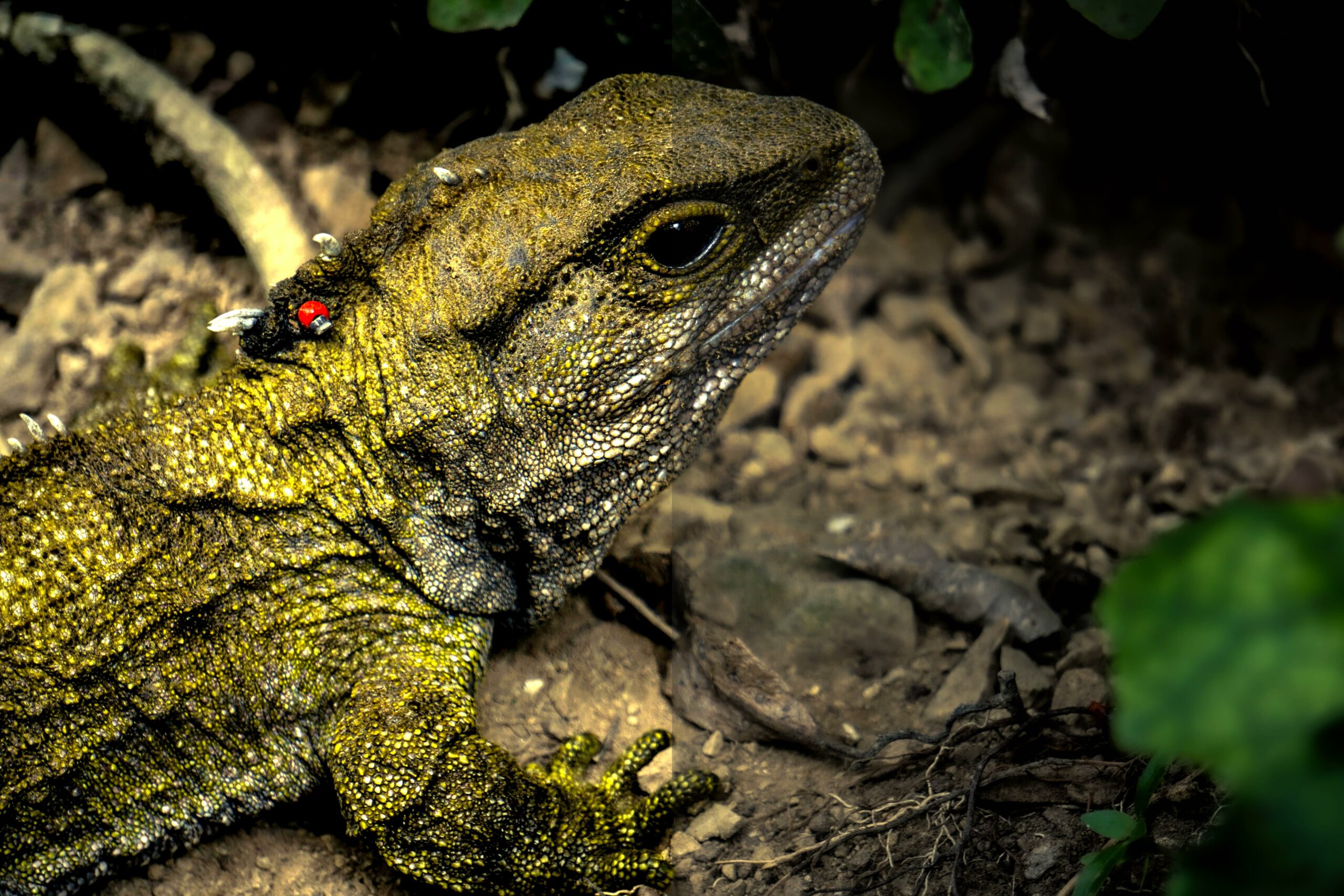If you’ve ever marveled at the wonders of the ancient world, fossils are the key to unlocking their secrets. In this article, we’ll delve into the fascinating world of fossils and explore their immense value to scientists. As paleontologists, these dedicated scientists devote their lives to studying these remarkable remnants of Earth’s past. From deciphering evolutionary patterns to reconstructing ancient ecosystems, fossils provide invaluable insights into our planet’s history. So, join us on this captivating journey as we unearth the incredible facts and discoveries that await within the world of fossils.
Facts about Fossils
Fossils have captivated the imagination of scientists and enthusiasts alike, offering a tantalizing glimpse into Earth’s ancient past. These remarkable remnants tell stories of long-extinct plants and animals, providing invaluable insights into the evolution of life on our planet.
1. Fossils come in various forms
Fossils can take many forms, from bones and teeth to shells and footprints. These preserved remains give us a tangible connection to creatures that roamed the Earth millions of years ago. The process of fossilization occurs when minerals gradually replace organic matter, turning it into rock-like structures.
“By examining fossils, we unlock a treasure trove of information about the past, piece by piece.”
2. Sedimentary rocks: the fossil treasure troves
Sedimentary rocks are the primary repositories of fossils. Over time, layers of sediment accumulate, preserving the remains buried within. The slow but steady process of sedimentation creates environments conducive to fossil preservation, allowing us to uncover extraordinary snapshots of the past.
“Just as a book tells a story, each layer of sediment preserves a chapter of Earth’s history.”
3. The ancient whispers captured in fossils
Fossils are time capsules, each holding a piece of our planet’s history. They can be millions of years old, offering an unparalleled window into the past. Paleontologists, the dedicated scientists who study fossils, carefully extract these fragments of time, unearthing evidence that reveals how life has evolved over countless millennia.
“With every fossil we discover, we unearth a secret from an era long gone.”
4. Dinosaurs: the stars of the fossil world
Dinosaurs have garnered immense popularity, thanks to their incredible fossil record. These captivating creatures ruled the Earth for millions of years before their extinction over 65 million years ago. Fossilized dinosaur bones provide intricate details about their anatomy, behavior, and the world they inhabited.
“Every dinosaur fossil is like a puzzle piece, fitting together to create a vivid picture of the prehistoric world.”
5. Diving into the depths of fossil diversity
While dinosaurs steal the limelight, there is a vast array of other fossils to explore. Ammonites, with their intricate and beautifully preserved spiral shells, once thrived millions of years ago and are commonly found as fossils. Trilobites, ancient arthropods with segmented exoskeletons, are also common fossil finds, capturing the imagination with their intriguing forms.
“In the realm of fossils, diversity reigns supreme, beckoning us into a world of endless fascination.”
6. Unearthing the origin of the word “fossil”
The word “fossil” traces its origins back to the Latin term “fossus,” meaning “dug up.” This etymology perfectly encapsulates the essence of fossils, as they are remnants of life dug up from deep within the Earth. Each fossil represents a precious artifact waiting to be discovered and deciphered.
“In every fossil, we find a tangible connection to the ancient treasures buried in the ground.”
7. Patience and perseverance in fossil excavation
Excavating fossils requires meticulous care and an unwavering commitment to detail. It can be an arduous process, occasionally extending over years or even decades. Take, for example, the astonishing case of a 15-ton elasmosaur fossil excavated in 1989. It demanded immense patience and a tenacious spirit to uncover this colossal creature from its rocky tomb.
“The journey to unveil the secrets of fossils is one marked by unwavering dedication and a steadfast spirit.”
8. The microscopic marvels: exploring microfossils
Not all fossils are visible to the naked eye. Microfossils, the tiny remains of ancient organisms, provide a different lens through which we observe the past. From minuscule foraminifera to microscopic pollen grains, these small fossils hold profound scientific significance and help us reconstruct long-lost ecosystems.
“While microfossils may be small in size, their impact on our understanding of the past is immeasurable.”
*In conclusion, fossils are the relics of bygone eras, illuminating the pages of Earth’s history. With every discovery, we uncover new clues about our planet’s incredible journey through time. From the towering giants of the dinosaur era to the subtle beauty of microscopic fossils, these ancient remnants keep us forever enthralled and remind us of our humble place in the tapestry of life.
Remember, the past continues to live on through the extraordinary fossils waiting to be unearthed.
“Facts about fossils” is a fascinating topic that continues to captivate young minds in the field of science. For children in KS2, exploring the wonders of fossils can be an exciting journey into the Earth’s past. If you’re curious about what fossils are and how they are formed, check out our informative article on facts about fossils ks2. It’s packed with interesting tidbits and engaging explanations, making it a perfect resource for budding paleontologists. Click here to uncover the incredible world of fossils.
Now, let’s dive deeper into the subject. Year 6 students are often drawn to the mysteries surrounding fossils. If you’re in Year 6 and eager to learn more about these ancient remnants, our article on facts about fossils for year 6 is just what you need. Discover how fossils provide invaluable insights into the Earth’s history and the remarkable creatures that once roamed its surface. Click here to embark on an unforgettable journey through time.
Attention Year 3 learners! Are you curious about fossils and fascinated by the secrets they hold? Look no further than our informative article on Facts About Fossils For Year 3. Uncover the amazing stories locked within these ancient treasures and learn how they help scientists piece together the puzzle of the past. Embark on a thrilling adventure by clicking here.
Explore the captivating world of fossils and dinosaurs with our comprehensive guide on facts about fossils and dinosaurs. Dive into the prehistoric realm and discover how scientists unlock the secrets of these long-extinct creatures through fossils. Gain a deeper understanding of our planet’s history and the fascinating organisms that once roamed it. Click here to unearth the excitement.
For all the eager Year 3 learners out there, our article on facts about fossils year 3 is a must-read! Delve into the amazing world of fossils and uncover the stories they tell about extinct creatures and the ancient environment. Prepare to be amazed by the wonders locked away in rocks and learn how fossils help scientists uncover the mysteries of the past. Click here to begin your fossil exploration.
When it comes to learning about fossils, there’s no better resource than facts about fossils wikipedia. Dive into the deep pool of knowledge available on this widely-used platform, as it provides a wealth of information on the subject. Whether you’re a student, teacher, or simply looking to satisfy your curiosity, this article will serve as an invaluable resource. Click here to delve into the expansive world of fossils.
Remember to click on the links above to access the articles and embark on an exciting journey into the realm of fossils!
3. Fossils Are Very Useful To Scientists
Fossils hold the key to unlocking the secrets of our planet’s ancient history. As a seasoned paleontologist, I can attest to the incredible usefulness of fossils in advancing scientific knowledge. These remarkable remnants from the past provide vital information about the world before humans, offering valuable insights into the diverse array of organisms that once roamed the Earth.
Understanding the Past
When we examine fossils, we delve into a time long gone, gaining glimpses into the evolutionary journeys of various life forms. By studying fossils, scientists can piece together the puzzle of prehistoric life, reconstructing ancient ecosystems and understanding how organisms shaped and adapted to their environments. Fossils allow us to witness the unfolding of evolution, providing tangible evidence of the incredible diversity of life that has existed on our planet.
“Fossils grant us access to a world that predates our own existence, enabling us to connect with the tapestry of life’s story.”
Insights into Ancient Organisms
Fossils offer a window into the lives of bygone organisms. Through meticulous analysis, scientists can learn where these creatures lived, what they ate, and how they met their demise. By examining the anatomical features of fossils, we can infer the behaviors and lifestyles of prehistoric creatures, uncovering their adaptations, locomotion, and feeding strategies. Fossils allow us to understand the complex interplay between organisms and their environments, painting a vivid picture of life millions of years ago.
“Fossils transform the distant past into a tangible reality, allowing us to witness the wonders of ancient life unfold before our eyes.”
Tracing Earth’s History
The fossil record provides an invaluable historical archive, capturing the story of life on our planet. By carefully analyzing fossils and their geological context, scientists can piece together a comprehensive timeline of Earth’s history. Fossils reveal the changing climates, shifts in ecosystems, and geological upheavals that have occurred over millions of years. They allow us to understand how life has responded to environmental changes in the past and provide essential insights into our current global challenges.
“Fossils have etched Earth’s history in stone, guiding us as we navigate the challenges of the present and envision the future.”
Unlocking the Secrets
Fossils offer a wealth of information yet to be discovered. With each new fossil find, we gain fresh perspectives and invaluable data about our planet’s past. Cutting-edge technologies and innovative research techniques continue to push boundaries, enabling us to extract even more information from these ancient remains. Through ongoing studies and in-depth analysis, we can continuously refine our understanding of fossils, providing future generations with a deeper insight into the mysteries of our planet’s history.
“Fossils are a treasure trove of untold stories, waiting patiently to be uncovered by curious minds and attentive hearts.”
In conclusion, fossils are not just mere remnants of organisms; they are captivating glimpses into a bygone world. They serve as essential tools in the hands of scientists, providing valuable insights into ancient life, Earth’s history, and the grand tapestry of evolution. As we continue to unearth fossils and unravel their secrets, we uncover the extraordinary story of life on our planet, allowing us to better appreciate the wonders of our natural world.
4. Paleontologists are scientists who study fossils.
As a paleontologist, I am part of a fascinating and dynamic field of scientific research. We paleontologists are dedicated scientists who study fossils to unlock the mysteries of early organisms and their ancient lives. By carefully analyzing fossils and comparing them, we can piece together the puzzle of how organisms evolved over vast periods of time. It’s like detective work, uncovering clues from the distant past to understand our world today.
When we talk about fossils, we are referring to the remains or traces of ancient life that have been preserved in rocks. These remnants can come in various forms, including bones, teeth, shells, and footprints. Sedimentary rocks are particularly rich in fossils, making them the primary repositories of these incredible relics. Fossils provide a direct link to the past, allowing us to catch a glimpse of the diverse plants and animals that lived millions of years ago.
As paleontologists, we take on the responsibility of exploring the world, seeking out fossils in different corners of the globe. The thrill of discovery is exhilarating, as each new find holds the potential to reshape our understanding of the history of life on Earth. By conducting meticulous excavations and employing cutting-edge laboratory techniques, we unravel the secrets held within these ancient remains.
But our work goes beyond just identifying and naming fossil species. We delve deep into the environment in which these organisms lived, deciphering the landscapes, climates, and ecosystems that shaped their existence. This interdisciplinary approach draws upon biology, geology, chemistry, and physics, allowing us to paint a vivid picture of the ancient past.
Why is all this important? Well, paleontology is crucial for understanding the history of life on Earth and how organisms have evolved over time. Fossils provide us with valuable evidence of ancient ecosystems and allow us to make connections between past and present life forms. They serve as a window into the past, guiding us to a better understanding of our planet’s past and its future.
By studying fossils, paleontologists can also gain insights into climate change and environmental shifts throughout Earth’s history. Fossils can reveal how different organisms responded to changing conditions, shedding light on how today’s species might adapt to a rapidly changing world. As stewards of the past, we play a crucial role in reconstructing ancient ecosystems, helping us navigate the challenges and changes of the present.
To sum it up, as paleontologists, we are passionate scientists dedicated to unraveling the secrets of the past. Our expertise lies in studying fossils – the remnants of ancient life buried in rocks. By meticulously excavating, analyzing, and interpreting these fossils, we gain valuable insights into the history of life on Earth. Our work not only expands our knowledge of the natural world but also inspires curiosity and wonder in others. So, join us on this incredible journey as we dig up the past and uncover the fascinating stories held within fossils. As paleontologists, we invite you to explore the captivating world of ancient life and discover the rich tapestry of our planet’s history.
“In the hands of paleontologists, fossils become windows through which we can peer into the ancient past, unlocking the secrets of bygone worlds.”
Fossils are remnants, traces, or imprints of ancient organisms that have been preserved over time. They provide scientists with valuable insights into the history and evolution of life on Earth. In this article section, we will explore some fascinating facts about fossils that will surely amaze you.
[youtube v=”sOhNoGhdYDg”]
One remarkable fact about fossils is that parrots, which we typically associate with small sizes, used to be much larger in the past. In 2019, a fossil of a parrot that lived around 16 to 19 million years ago was discovered. The bird, affectionately called “Squawk Zilla,” was approximately three feet tall and weighed around 15 pounds. This finding surprised many, as the bones were initially misidentified as belonging to an eagle due to the assumption that parrots could not reach such large sizes.
To get a glimpse into the extensive collection of fossils, we take you to the Big Bone Room at the American Museum of Natural History. This room houses over a thousand fossil bones, with only a minuscule fraction on public display. About two-hundredths of a percent of the museum’s vertebrate fossils are available for public viewing, while the majority are stored in behind-the-scenes areas and utilized for research purposes by paleontologists worldwide.
Carl Melling, a senior museum specialist at the AMNH, shares the fascinating story behind one of his favorite specimens: the beak bone of a triceratops. This specific fossil provides valuable insights into how the beak of the triceratops was structured and supplied with blood during the animal’s lifetime. Fossils, in general, can be defined as the preserved remains, traces, or imprints of an organism. The common definition also requires that fossils be at least ten thousand years old.
Fossils can be found in various forms, including body fossils and trace fossils. Body fossils, such as bones and teeth, are what most people envision when thinking about fossils. Trace fossils, on the other hand, provide evidence of an animal’s behavior, such as footprints, nests, or even feces. These remnants of ancient life allow scientists to reconstruct prehistoric ecosystems and understand the behaviors and interactions of long-extinct animals.
The word “fossil” can be traced back to the Latin term “fascists,” which means “dug up.” In its earliest usage around the 1600s, “fossil” referred to anything that had been unearthed. Over time, it came to specifically denote the preserved remains of ancient organisms. Identifying the exact nature of a fossil can sometimes be challenging. Microfossils, for example, are fossils of bacteria, pollen, or other microscopic organisms that cannot be studied with the naked eye.
In 2017, paleobiologist J. William Schopf published a groundbreaking paper on microfossil microbes believed to be 3.4 to 3.6 billion years old. These microfossils provided possible evidence of some of the oldest life forms ever discovered. However, skeptics argued that the so-called fossils were merely minerals that resembled biological specimens. The debate surrounding the authenticity of these microfossils continues among scientists to this day.
Discovering and studying fossils is a process that requires patience and perseverance. For example, William Zinsmeister unearthed the fossil of an approximately 15-ton, 40-foot-long Alosaurs (a plesiosaur) in 1989 on Seymour Island in Antarctica. Excavating in the harsh Antarctic conditions was slow and limited to only a few weeks each year. It took nearly three decades to complete the excavation, highlighting the substantial time investment often required in paleontological endeavors.
The fascination with fossils is not a recent phenomenon. Humans have been discovering and utilizing fossils for various purposes throughout history. For example, ancient Greeks believed in the existence of Cyclopes, giant creatures with a single eye. Some speculate that these mythical beings may have been inspired by large elephant skulls found by ancient people. Mammoth bones and teeth have also been discovered throughout history, with some being mistakenly interpreted as the remains of giant humans.
It was not until the early 19th century that the true nature of fossils began to be understood. In 1824, paleontologist William Buckland correctly identified a fossil as belonging to a reptile, specifically a Megalosaurus. Another significant discovery took place a few decades later when an Archaeopteryx fossil was found. This fossil contained both feathers and teeth, providing evidence for the link between dinosaurs and birds.
In recent years, advancements in technology and scientific techniques have deepened our understanding of fossils. In 1996, the fossil of a non-avian dinosaur, Sinosauropteryx, was discovered, complete with preserved feathers. This finding shed light on the colorful appearance of certain dinosaurs, with experts believing that Sinosauropteryx had a red and white tail. The fossils of other dinosaurs, such as the Anchiornis, have also revealed detailed information about their coloration.
Paleontologists are constantly unearthing new evidence and revising our understanding of prehistoric life. In 2019, researchers working in the Hell Creek Formation in North Dakota found fossils of fish that perished during the event that wiped out 75% of the Earth’s plant and animal species, including dinosaurs. This finding provides further insights into the impact and aftermath of the catastrophic event that led to the extinction of the dinosaurs.
Trace fossils, such as footprints and coprolites (fossilized feces), offer unique glimpses into the behavior and diet of ancient organisms. They allow scientists to reconstruct the lives of long-extinct creatures. However, it is important to note that not all fossils are created equal. In some cases, fossilized resin or amber can preserve intricate details of ancient life. In 1990, scientists found a mosquito trapped in amber that had supposedly fed on dinosaur blood. However, this scenario is purely fictional, inspired by the plot of the movie Jurassic Park.
Fossil records also reveal surprising details about the diversity and evolution of different species. For example, some crocodile relatives were herbivores, and there was even a crocodilian species known as the “cat crocodile” due to its mammal-like characteristics. Additionally, the discovery of the 110 million-year-old dinosaur skeleton in Alberta, Canada, shed light on the bloat and float process, where dead animals bloat with gases, float through water, and eventually sink, becoming preserved in sediment.
Throughout history, there have been debates and controversies within the field of paleontology. The Bone Wars of the late 19th century saw paleontologists competing to name and identify numerous dinosaur species. Notably, the Apatosaurus and Brontosaurus were initially thought to be separate species until a study in 1903 concluded that they were, in fact, the same genus. However, a more recent study published in 2015 suggested that they should be considered distinct animals.
Lastly, we end with an astonishing fossil discovery: a prehistoric penguin known as the Crossvallia waiparensis. This ancient penguin, which lived between 56 and 66 million years ago, stood at an impressive height of 5 feet 3 inches, taller than the average human. However, even this penguin predecessor was overshadowed by an even larger species called the Palaeudyptes klekowskii, which could reach a towering height of 6 feet 5 inches.
Fossils continue to captivate the imaginations of scientists and enthusiasts alike, offering glimpses into the mysteries of our planet’s prehistoric past. These preserved remains, traces, and imprints allow us to uncover not only the physical characteristics of ancient organisms but also the fascinating behaviors, interactions, and diversity of life that once thrived on Earth. With ongoing research and new discoveries, our understanding of fossils and the stories they tell will undoubtedly continue to evolve.
FAQ
Q: How are fossils useful to scientists?
A: Fossils provide valuable information about the world before humans, including insights into dinosaurs, ancient plants, and extinct mammals. They give scientists clues about where organisms lived, what they ate, and how they died. Fossils also help scientists understand how prehistoric organisms obtained food, reproduced, and behaved. Moreover, fossils can provide evidence of how and why organisms died.
Q: What do paleontologists study?
A: Paleontologists are scientists who study fossils to learn about early organisms and how they lived. They compare fossils to find clues about how organisms evolved over long periods of time and how living things today relate to those from millions of years ago. Paleontology, the study of plants and animals that lived millions of years ago, involves the identification and naming of fossil species and organisms, as well as determining the environment in which they lived.
Q: Why is paleontology important?
A: Paleontology plays a crucial role in understanding the history of life on Earth and how organisms have evolved over time. Fossils provide valuable evidence of ancient ecosystems and help scientists make connections between past and present life forms. By studying fossils, paleontologists can also gain insights into climate change and environmental shifts throughout Earth’s history. The field of paleontology uses biology, geology, chemistry, and physics to reconstruct the past and advance our knowledge of the natural world.
Q: What is the fossil record?
A: The fossil record refers to the collection of fossils found throughout the world. It is important for understanding the history of life on Earth, as well as past climates and geological conditions. The fossil record includes the remains or traces of ancient life, such as bones, teeth, imprints, insects preserved in amber, or footprints. Fossils can take a long time to excavate and recover, as demonstrated by the example of a 15-ton elasmosaur fossil found in 1989.
Q: What are microfossils?
A: Microfossils are fossils of small organisms, such as bacteria or pollen, that are too small to be studied with the naked eye. These fossils require specialized techniques for study, as they can provide valuable insights into ancient life and environments. Microfossils contribute to our understanding of evolution and the changing environment over time.
- China II Review: Delicious Food & Speedy Service - April 17, 2025
- Understand Virginia’s Flag: History & Debate - April 17, 2025
- Explore Long Island’s Map: Unique Regions & Insights - April 17, 2025
















